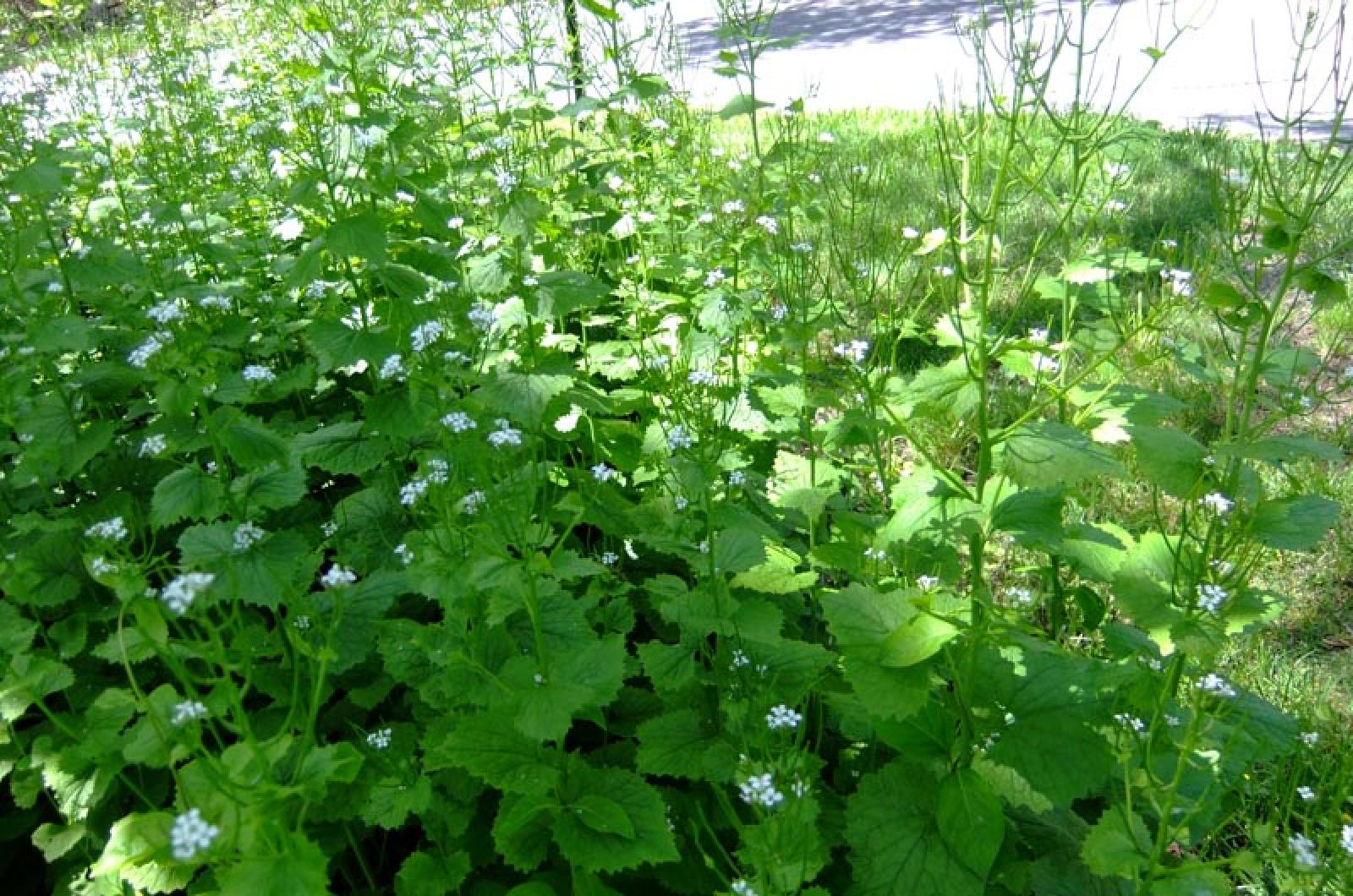Most Vineyarders already know some basic information about invasive species and why they’re a problem. Basically, invasives are plants or animals, usually from a different part of the world, that are too aggressive. Separated from whatever factors keep them under control in their original range, the spread rapidly and crowd out more diverse and more desirable native wildlife.
One invasive plant that turned up rather recently on the Vineyard — within the past decade or so — is garlic mustard. A native of Eurasia, garlic mustard is especially aggressive in damp habitats, but like most invasives, it’s highly adaptable and can tolerate a wide range of conditions. So far on the Vineyard, garlic mustard appears to be restricted to areas disturbed by human activity like yards and roadsides. While getting rid of garlic mustard takes work, the process is simple and no herbicides are needed to kill it. If everyone on the Vineyard keeps alert for this plant and attacks it wherever it turns up, there is still time to control garlic mustard before it does serious ecological damage.
A member of the mustard family, garlic mustard is a biennial plant. In its first year, a garlic mustard plant grows as a low rosette of leaves. In its second spring, the plant shoots up into a much taller stalk and produces a cluster of white flowers, each with four petals. Shortly after, seed pods form: long, slender pods like tiny green beans, holding dozens of seeds.
If you can pull garlic mustard out by the roots before it sets seed, it’s possible to halt the infestation in its early stages. If any seeds at all have been produced, you’ll need to monitor the site and probably pull new generations of plants for several years. But with persistence, it is possibly to get rid of a population entirely, and the earlier you get started, the quicker the process will go.
There are many members of the mustard family already established on the Island, and while few of them are actually desirable plants, none are as troublesome as garlic mustard. Learn to recognize the broad, heart-shaped leaves of this species, which are coarsely toothed around their margins. The tall habit and fairly large size of garlic mustard also help distinguish this plant from its less worrisome relatives.
One final point: immature seeds on a garlic mustard plant will continue to ripen even after the plant has been uprooted. So do not compost garlic mustard plants that you’ve pulled out, or even leave them on the ground; the seeds may still mature, making your problem even worse. It’s better to bag the pulled plants up and dispose of them like trash.
As troublesome as this plant is, garlic mustard presents an unusual opportunity on the Vineyard. Because the plant only recently arrived here and hasn’t spread very widely, it’s still possible to get rid of it entirely. But it will require vigilance and a little hard work on the part of anybody who gardens or cares about wild plants. Please do your part!




Comments (3)
Comments
Comment policy »